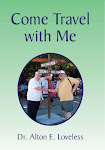
I don’t believe I have ever been in London but what I would visit the famous Westminster Abby because of the uniqueness of the place.
Westminster Abbey presents a pageant of British history – the shrine of St. Edward the Confessor, the tombs of kings and queens, and countless memorials to the famous and the great. It has been the setting for every British Coronation since 1066. Today it is still a church dedicated to regular worship and to the celebration of great events in the life of the nation.
This church became known as the “west minster” to distinguish it from St. Paul’s Cathedral (the east minster) in the City of London. Unfortunately, when the new church was consecrated on 28 December 1065 the King was too ill to attend and died a few days later. His mortal remains were entombed in front of the High Altar.
Westminster Abbey is dedicated to St Peter. In 1540 Henry VIII had designated the Abbey a cathedral with its own bishop and diocese. However when the bishopric was dissolved in 1550 and the church made a second cathedral in the diocese of London some lands belonging to the church were exchanged or sold off. Some of this money was used for the repair of (old) St. Paul’s cathedral, hence taking funds from St. Peter’s church to pay St Paul’s cathedral. Hence the origin of the phrase, “robbing Peter to pay Paul.”
I have always been in awe with the many unusual buried designates. The reason is that the Abbey contains some 611 monuments which does not include the graves or memorial stones on the floor and wall tablets. It contains the most important collection of monumental sculpture anywhere in the country since well over three thousand people are buried there. Notable among these is the Unknown Warrior, whose grave, close to the west door, has become a place of pilgrimage. Over the exterior wall at the west door is the inscription, “MAY GOD GRANT TO THE LIVING GRACE TO THE DEPARTED REST TO THE CHURCH & THE WORLD PEACE AND CONCORD AND TO US SINNERS ETERNAL LIFE.”
Some of the more famous people buried in the Abbey are: Poets/writers: Geoffrey Chaucer, Edmund Spenser, John Dryden, Dr Samuel Johnson, Charles Dickens, Robert Browning, Alfred Lord Tennyson, Rudyard Kipling, John Masefield.
Scientists/engineers: Sir Isaac Newton, Thomas Telford, Charles Darwin, Lord Kelvin, Ernest Rutherford, Sir J.J.Thomson. Musicians: George Frederic Handel, Henry Purcell, John Blow, Ralph Vaughan Williams. Actors: David Garrick, Sir Henry Irving, Dame Sybil Thorndike, Laurence Olivier. Architects: Robert Adam, Sir William Chambers, Sir Charles Barry, Sir George Gilbert Scott, George Edmund Street, Sir Herbert Baker. Politicians: William Pitt Earl of Chatham, William Pitt the Younger, Charles James Fox, William Ewart Gladstone, Ernest Bevin, Clement Attlee. Military/Naval/RAF: Prince Rupert of the Rhine, Field Marshal George Wade, Admiral Sir Cloudesley Shovell, Admiral Thomas Cochrane, Lord Trenchard, Lord Dowding. Others: David Livingstone, Sir Rowland Hill, William Wilberforce, Baroness Burdett Coutts.
Still today, a daily pattern of worship is offered with services representative of a wide spread of interest and social concern, are held regularly. In 1965-66 the Abbey celebrated its 900th anniversary, taking as its theme ‘One People’. Such a theme seemed to be fitting for a church which, through a long history of involvement with the developing life of the British people, has become known throughout the world.
I have never yet been to the Abby but what I was able to sit and worship via a hymn or homily being given by a resident minister.
There are probably not many churches that enshrines as many as this one, but there is a place that will have a far greater number of noble people. They were probably not Kings or Queens or people of great position, but they will be esteemed above all but the name that is above every name.
“Wherefore God also hath highly exalted him, and given him a name which is above every name: That at the name of Jesus every knee should bow, of things in heaven, and things in earth, and things under the earth;” -- Philippians. 2:9-10





